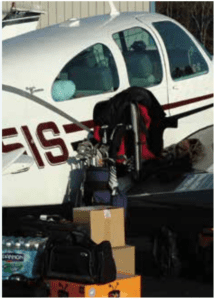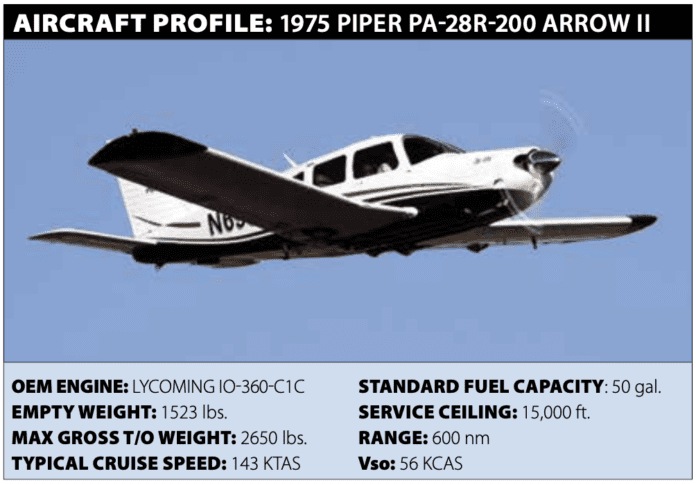When considering which airplane one should fly—whether renting, clubbing, owning or via some other arrangement—a time-honored maxim is to consider your mission and use one that’s most suitable. Since it’s never that simple, such an answer usually elicits a big “duh” from the questioner.
It would be nice to have one airplane to meet all of our possible mission needs and wants: nonstop range, a solid IFR platform, something that can land on water more than once or go upside down legally. Instead, the reality is we often adapt the mission to the airplane.
For example, we often trade filled seats for full fuel tanks, or replace that fuel with air to carry more in the cabin. That’s called flexibility, and it helps bridge the chasm between the ideal, do-anything airplane and what we are flying today. But with that flexibility comes responsibility.
For an obvious example, if you or your favorite flivver is VFR-only, you shouldn’t launch into weather that has the ducks walking. You shouldn’t fly with more adult passengers than you have seats for. And you shouldn’t (try to) fly a five-hour trip with only four hours of fuel. Well, to be more precise, you can do all of these things, and more, but a successful outcome becomes more unlikely.
Background
On September 22, 2021, at about 1624 Mountain time, a 1975 Piper PA-28R-200 Arrow II was substantially damaged when it was landed off-airport in Page, Arizona. The pilot (male, 57) sustained fatal injuries; the passenger was seriously injured. Visual conditions prevailed for the cross-country flight.
According to ADS-B data, the flight departed San Martin, California, at about 1211 Pacific time. The airplane was climbing for the first 50 minutes of flight, eventually cruising at about 12,000 feet msl for about 80 minutes. After descending to about 7700 feet msl, the airplane cruised at roughly the same altitude for some 54 minutes.
By 1615 Mountain time, the airplane was some 30 nm west of Page at about 7250 feet msl (1100 feet agl). At about 1623, the airplane descended to 6600 feet msl (500 feet agl), where it remained until 1623:46, when it began its final descent. The final ADS-B data point, at 1624:15, showed the airplane at 200 feet agl and about 0.5 nm northwest of the accident site.
According to the ADS-B data, the total distance of the accident flight was about 620 statute miles. The surviving passenger (the pilot’s wife) recounted that most of the flight was uneventful but that a few minutes before the accident, “the pilot became visibly upset and began pushing buttons.”

Any certificated pilot knows an airplane can only carry so much weight, and that it has to be placed so that the center of gravity is within limits. But there’s little guidance from manufacturers or the FAA about how the items we put in our airplanes should be secured.
This accident clearly was survivable, as most-engine-out landings are. The pilot’s fatal injuries stemmed from the unsecured boat motor. According to the NTSB, “Postaccident photographs showed that the pilot was pinned between the seatback and the forward control panel in a compressed “knees-to-chest” position. The photographs also showed an unrestrained 80-pound outboard boat motor in the airplane cabin behind the front left (pilot’s) seat; the heaviest portion of the motor contacted the back of the front left seat.”
Pilots like to think the upcoming flight will be smooth and none of the baggage will become dislodged by turbulence. But turbulence isn’t the only way unsecured items can pose a threat. Sudden stops count, too.
Investigation
The accident site was on a mesa at an elevation of about 6150 feet msl. A debris path was marked by parallel ground scars that began about 20 feet beyond the first point of impact and was oriented on a magnetic heading of 155 degrees. The outboard right stabilator was located on the left side of the debris path.
Continuity of the aileron, stabilator and rudder cables was confirmed from the cockpit to their respective control surfaces. Mechanical continuity of the engine was established throughout when the crankshaft was manually rotated at the propeller. Thumb compression was achieved at all four cylinders. Borescope examination of the cylinders revealed normal piston face and valve signatures and no indications of catastrophic engine failure.
The three-bladed propeller remained attached at the crankshaft flange. All three blades remained attached to the hub. One blade was bent aft at the blade root, another was bent aft at the blade tip and the other blade was straight. None of the propeller blades displayed any visible chordwise scratches, nicks or gouges.
The right and left wing fuel tanks had no fuel and displayed no evidence of fuel staining. There was also no evidence of fuel staining on the ground around the wings or any fuel smell. The fuel system exhibited no visible breaches, and all fuel system components functioned normally.
The pilot’s “weight record document” included the number 256, which the NTSB presumed to be the weight of fuel aboard and corresponds to 42 gallons. The airplane’s published fuel consumption at 65 percent power was 9.16 gallons per hour. Computations showed that the airplane would have had an endurance of about four hours and 24 minutes with 42 gallons of fuel aboard. The total accident flight time was four hours and 12 minutes.
Using that value for the fuel aboard, the NTSB determined the airplane was within its center of gravity envelope but slightly—14 pounds, or less than one percent—overweight. In addition to people and fuel, items carried in the airplane on the accident flight weighed 363 pounds and included an 80-pound boat motor, camping gear, a raft, luggage and two dogs.
The passenger told the NTSB that all items in the back of the airplane were secured with rope. The onsite investigation found that the items were not secured, and rope was not located.
Probable Cause
The NTSB determined the probable cause(s) of this accident to include: “The pilot’s improper fuel planning for a cross-country flight, which resulted in fuel exhaustion and a total loss of engine power.”
It shouldn’t be rocket science to understand that the flexibility we often count on from our chosen airplane requires trading some things for other things. Often, we choose to carry heavy or bulky items—including self-loading cargo (passengers)—and trade that capability for fuel. I’ll go out on a stout limb and suggest that no pilot likes to leave fuel on the truck and air in the tanks, but we’ve all done it to remain within operating limitations. We just have to remember we can’t go as far as we normally can, and take steps to mitigate the risk posed by the reduced fuel load.
Again, it shouldn’t be rocket science—but apparently is to some pilots—that we may need to plan for at least one en route fuel stop when carrying more than our normal load and remaining within weight and balance limitations.
According to the NTSB, Page, Arizona, was the flight’s planned destination. The accident site was 12 nm from the Page airport. In other words, less than 10 more minutes of fuel—about 1.5 gallons—would have seen the airplane on the destination airport’s runway. That wouldn’t have complied with the 30-minute fuel reserve required for day VFR, but no one would have been the wiser. In this case, the pilot simply cut things too close.




